The Leading Edge: November/December 2023 Wind Energy Newsletter
In this issue, NREL celebrates the 10-year anniversary of the Controllable Grid Interface, a Nature Energy article on offshore wind energy deployment, and more—plus the latest news, opportunities, and publications.
Upwind: Featured News
Celebrating 10 Years of NREL’s 7-MW Controllable Grid Interface
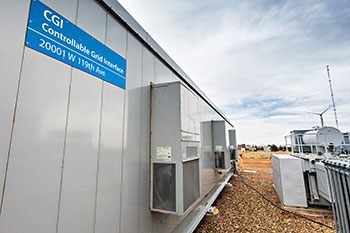
During a record flood in 2013, the never-before-tried Controllable Grid Interface (CGI) came through for a team of NREL researchers racing toward an intense deadline. Since that day, up to 100 NREL research projects have benefited from the CGI—a customized, isolated research grid that helps researchers, manufacturers, and system operators understand how renewable energy systems react to grid disturbances at the multimegawatt scale. That ability saves time and resources while minimizing integration issues, improving reliability, and advancing the development and deployment of renewable energy technologies.
Over the past decade, NREL has expanded the CGI’s capabilities to include additional functionalities and lessons-learned refinements. The potential for other CGI applications—such as bringing in a battery storage system to connect the CGI to NREL’s Flatirons Campus—formed the basis for NREL’s Advanced Research on Integrated Energy Systems research platform. As NREL celebrates the many achievements of the CGI, an upgraded, more powerful version is about to become research-ready.
Contracts Stabilize Costs To Boost Renewable Energy Development
Global offshore wind energy capacity could increase to nearly 400 GW by 2032—six times what it is today. To support that growth and encourage other renewable energy projects, which require significant upfront investment, governments around the world are increasingly using contracts for difference. Contracts for difference are agreements that establish a fixed price for electricity over a specific contract duration, shielding renewable energy projects, investors, and consumers from price fluctuations. In a Perspective article published in the journal Nature Energy, an international team, led by NREL’s Philipp Beiter, explains how these contracts help mitigate cost risk and support increased clean energy deployment.
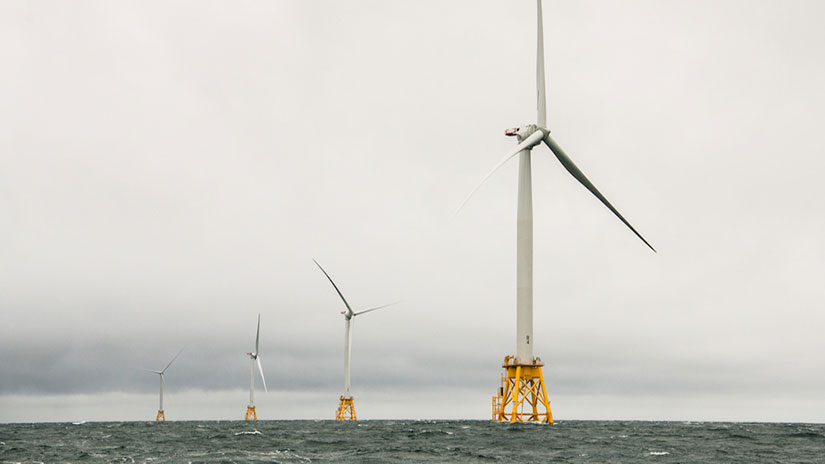
Recyclable, Plant-Based Material Could Take a Spin on the Next Generation of Wind Turbines
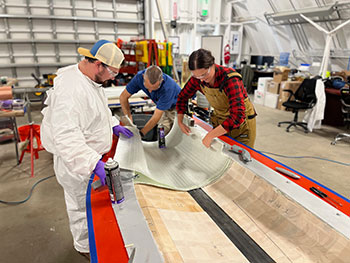
Behind the Blades
Vahan Gevorgian’s Three-Decade Clean Energy Odyssey
Twenty-nine years ago, Vahan Gevorgian was a postdoctoral researcher studying wind and hybrid energy systems at the State Engineering University of Armenia when a once-in-a-lifetime opportunity presented itself.
Ken Touryan, a NREL researcher who was supporting the Armenian energy sector, connected Gevorgian with Larry Flowers. Flowers was an NREL researcher visiting Armenia for NREL’s Village Power Project, which focused on electrifying rural locations with renewable energy. The two met up at the university, and Flowers invited Gevorgian to join his team at NREL—halfway around the world in Colorado.
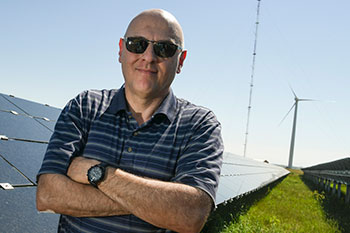
But Gevorgian didn’t let the great distance discourage him.
“Even then, NREL was one of the top research institutions for renewable energy, so it didn’t matter how far I had to travel,” said Gevorgian. “I would have gone to the dark side of the moon for it.”
Twenty-nine years later, Gevorgian is still at NREL, now a senior research fellow and chief engineer in the lab’s Power Systems Engineering Center. He contributes to many different projects, but his work mainly focuses on integrating renewable energy sources—such as wind, solar, and hydropower—into the electric grid.
We caught up with Gevorgian to learn more about his background, his work at NREL, and his advice for early-career wind energy researchers. Read our full interview with Gevorgian.
On the Radar: Project Updates
Michael Sprague and Team Receive Advanced Scientific Computing Research Leadership Computing Challenge Award
Wind energy researchers at NREL were awarded a 2023 Advanced Scientific Computing Research Leadership Computing Challenge award for their proposal titled Grand-Challenge Predictive Wind Farm Simulations. NREL’s Chief Wind Computational Scientist Michael Sprague—along with colleagues Ashesh Sharma, Ganesh Vijayakumar, and Jon Rood—were awarded 3.7 million "node hours" on the Frontier supercomputer at Oak Ridge National Laboratory’s Leadership Computing Facility. They’ll use that high-performance computing capacity and the ExaWind code suite to simulate large wind farms comprising modern megawatt-scale wind turbines with long and flexible blades.
“The simulations we proposed will be the crowning achievement of 7 years of ExaWind development under the U.S. Department of Energy’s (DOE’s) Exascale Computing Project and the Wind Energy Technologies Office,” Sprague said of the award. “Using supercomputers like Frontier will allow us to understand the physics of wind plants in a way that could drive significant reductions in the cost of wind energy.”
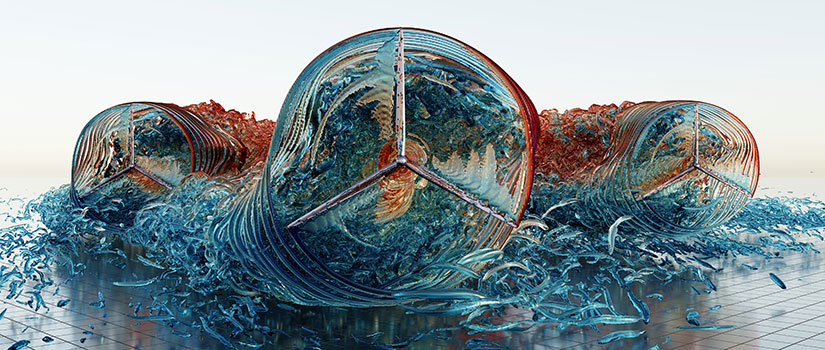
The ExaWind project simulates large wind farm interactions, such as the one shown above—NREL’s 5-MW turbines in a stable atmospheric boundary layer. Image by Nicholas Brunhart-Lupo and Ashesh Sharma, NREL
Small Wind for the Win: NREL's TAP Software Revolutionizes Distributed Wind Energy Planning With Accurate Wind Speed Assessments
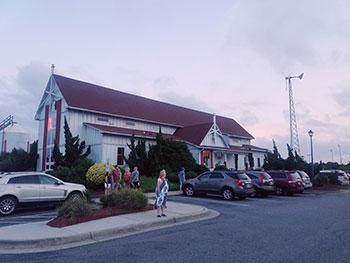
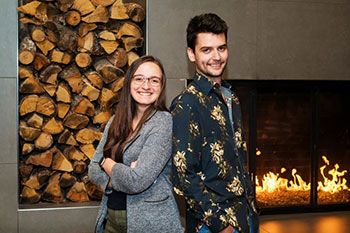
Through the Energy I-Corps Program, NREL Wind Energy Teams Pave the Way to Technology Commercialization
Two teams representing NREL wind energy participated in the 17th cohort of DOE’s Energy I-Corps program, an entrepreneurial business training program that pairs national laboratory research teams with industry mentors to get their technologies ready for commercialization. Team 208—comprising NREL researchers Genevieve Starke, the principal investigator, and Misha Sinner, the entrepreneurial lead—developed a platform called Hercules, which can generate real-time simulations of hybrid energy systems. Team 211—led by NREL researchers Christopher Bay, the principal investigator, and Jared Thomas, the entrepreneurial lead—helped guide the development of an open-source software tool called GreenHEART, which helps design environmentally friendly hydrogen and renewable energy technologies for specific purposes, such as reducing carbon emissions in industries.
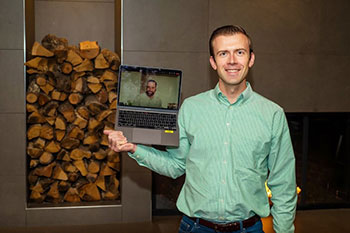
By participating in the Energy I-Corps program, researchers return to their labs equipped
with a plan for collaborating with their respective industries, which will shape future
research and help create a culture in which researchers stay informed about market
trends. This program helps ensure that money invested in national laboratories contributes
to and boosts the long-term competitiveness of the United States.
Downwind: In Case You Missed It
From Spooky to Scholarly: Highlights From the 2023 North American Wind Energy Academy/WindTech Conference
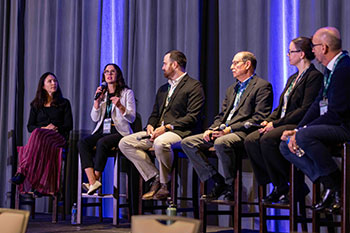
Wind energy researchers, educators, students, and industry members, as well as government and nonprofit representatives from around the world, gathered in Broomfield, Colorado, for the 2023 North American Wind Energy Academy/WindTech 2023 Conference. Held Oct. 30–Nov. 1, with supplemental events Nov. 2–3, the conference featured plenary sessions, workshops, and poster presentations focused on some of today’s most pressing wind energy issues. Colorado Congressman Joe Neguse kicked off the conference with a keynote speech, veteran NREL researchers Sue Hock and Bob Thresher received awards for their contributions to the early days of wind energy research in North America, and a former NREL intern—now a professor at Roger Williams University—won the conference’s impromptu costume contest with his floating offshore wind turbine costume.
2024 Funding Solicitation Notice of Intent Issued
NREL Wind Energy Experts Highlighted in Recent International Energy Agency Wind Newsletter
In October 2023, the International Energy Agency Wind Technology Collaboration Programme released a newsletter highlighting its recent meeting in Hannover, Germany, which included presentations from NREL wind energy experts Amy Robertson, Paul Fleming, and Paula Doubrawa. Read the International Energy Agency Wind newsletter on LinkedIn to learn more.
Upcoming Events, News Mentions, Recent Publications
Join NREL and Wind Energy Technologies Office researchers at upcoming events. Below are a few highlights.
Upcoming Events
Wind Energy and Wildlife: Perspectives From Latin America
Jan. 10, 2024, 12–1 p.m. MT, online
The IEA Wind Task 34—Working Together to Resolve Environmental Effects of Wind Energy—is hosting its 23rd webinar and first webinar in Spanish. The webinar will feature speakers from Argentina, Chile, and Mexico. View the Spanish flyer.
Northwest Offshore Wind Conference 2024
Jan. 30–31, 2024, Portland, Oregon
The Pacific Ocean Energy Trust is hosting its annual conference to gather key stakeholders, experts, and leaders to discuss how offshore wind energy in the U.S. Pacific Northwest can benefit communities, strengthen energy security, and help meet the nation’s clean energy goals. Early-bird registration is available through Dec. 31, 2023.
Floating Wind Solutions 2024
Feb. 5–7, 2024, Houston, Texas
On Feb. 5, 2024, DOE will host a panel discussion moderated by Jocelyn Brown-Saracino titled Floating Offshore Wind Shot Priorities, Progress, and Next Steps. This panel, led by DOE's Floating Offshore Wind Shot™ team, will showcase the significant achievements made in the first year of the initiative and how these accomplishments are helping drive the deployment of floating offshore wind technology. The discussion will also delve into how current work and feedback from stakeholders have informed priorities for future endeavors, which will guide federal efforts in the field over the next 2–3 years.
NREL in the News
NREL Will Lead Two $19M Research Centers To Spur Decarbonization Efforts as Part of DOE’s Energy Earthshots Initiative, Susannah Shoemaker, NREL, Dec. 6, 2023
Congress Looks To Boost Job Training for Offshore Wind Industry, Pamela Glass, Work Boat, Nov. 19, 2023
Invertible Neural Network Tool Helps Optimize Airfoil Design, Justin Daugherty, NREL, Oct. 25, 2023
Decarbonizing the Decarbonizing: Tidal and Wind Turbines Get Even More Sustainable, Caitlin McDermott-Murphy, NREL, Oct. 19, 2023
Recent Publications
Analysis
Cost-Benefit Assessment Framework for Robotics-Driven Inspection of Floating Offshore Wind Farms, Wind Energy (2023)
Developing a 20-Year High-Resolution Wind Data Set for Puerto Rico, Energy (2023)
Five Grand Challenges of Offshore Wind Financing in the United States, Energy Research & Social Science (2023)
Grand Challenges Revisited: Wind Energy Research Needs for a Global Energy Transition, NREL Technical Report (2023)
Northern California and Southern Oregon Offshore Wind Transmission Study, Schatz Energy Research Center Technical Report (2023)
Observed Impacts of Large Wind Farms on Grassland Carbon Cycling, Science Bulletin (2023)
Technology
Characterization of Wind Turbine Flow Through Nacelle-Mounted Lidars: A Review, Frontiers Research Foundation (2023)
Control Codesign of a Floating Offshore Wind Turbine, Applied Energy (2023)
Dynamic Performance of a Passively Self-Adjusting Floating Wind Farm Layout to Increase the Annual Energy Production, Copernicus GmbH (2023)
Expanded Modelling Scenarios to Understand the Role of Offshore Wind in Decarbonizing the United States, Nature Energy (2023)
Experimental Investigation of Advanced Turbine Control Strategies and Load-Mitigation Measures With a Model-Scale Floating Offshore Wind Turbine System, Applied Energy (2023)
Generalized Filtered Lifting Line Theory for Arbitrary Chord Lengths and Application to Wind Turbine Blades, Wind Energy (2023)
Predicting Wind Farm Operations With Machine Learning and the P2D-RANS Model: A Case Study for an AWAKEN Site, Wind Energy (2023)
Wind Turbine Main Bearing Rating Lives as Determined by IEC 61400-1 and ISO 281: A Critical Review and Exploratory Case Study, Wind Energy (2023)
Want More?
Subscribe to The Leading Edge newsletter, and explore the latest news and accomplishments in wind energy at NREL.
Share

